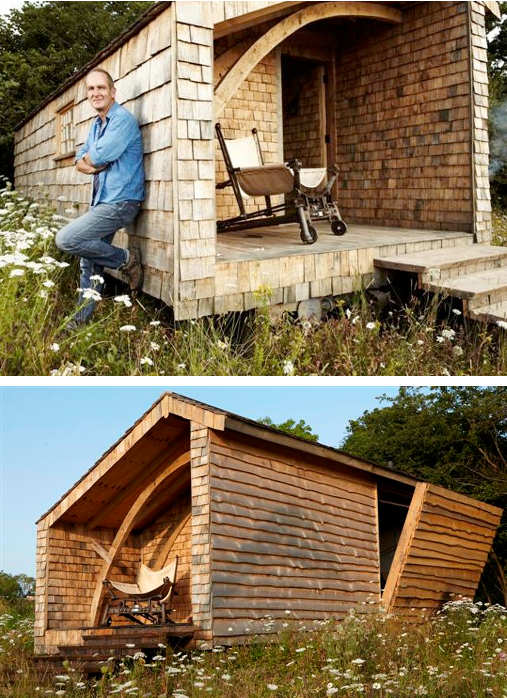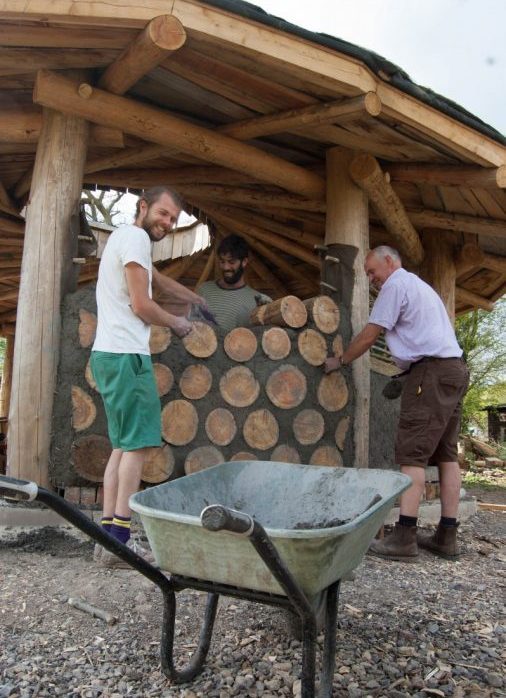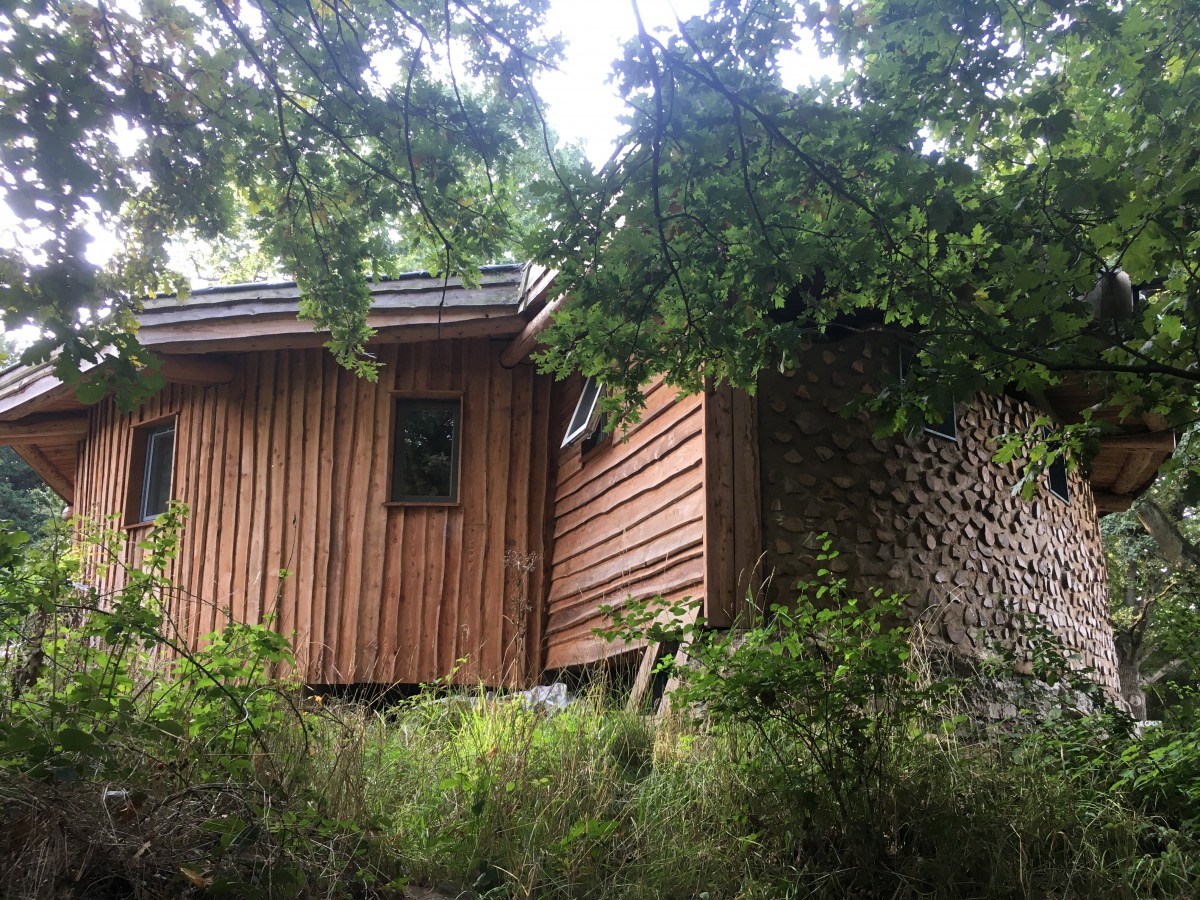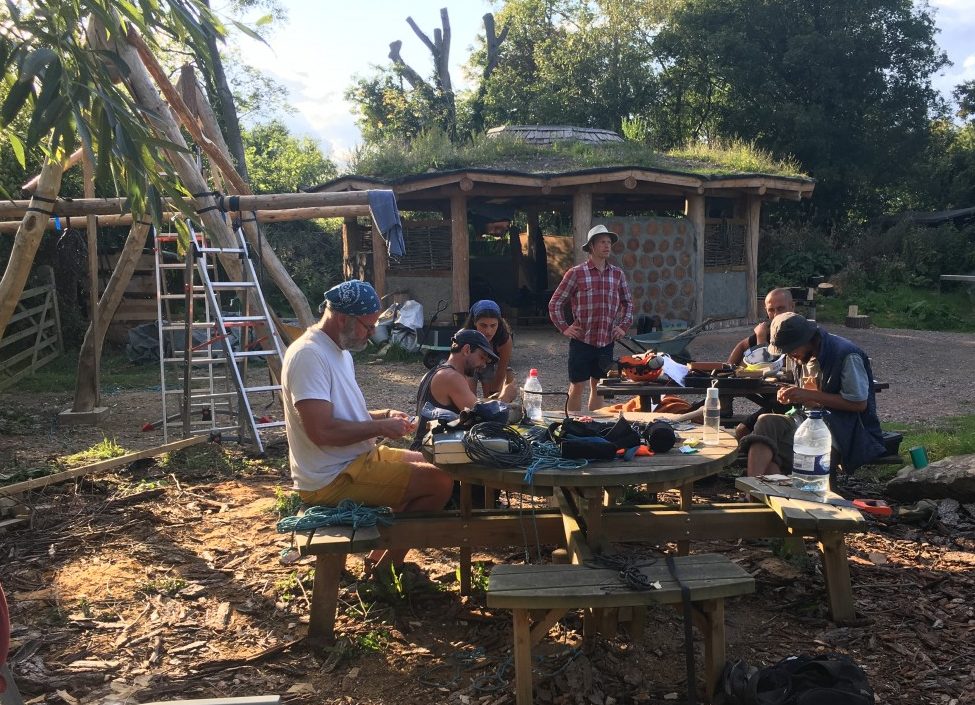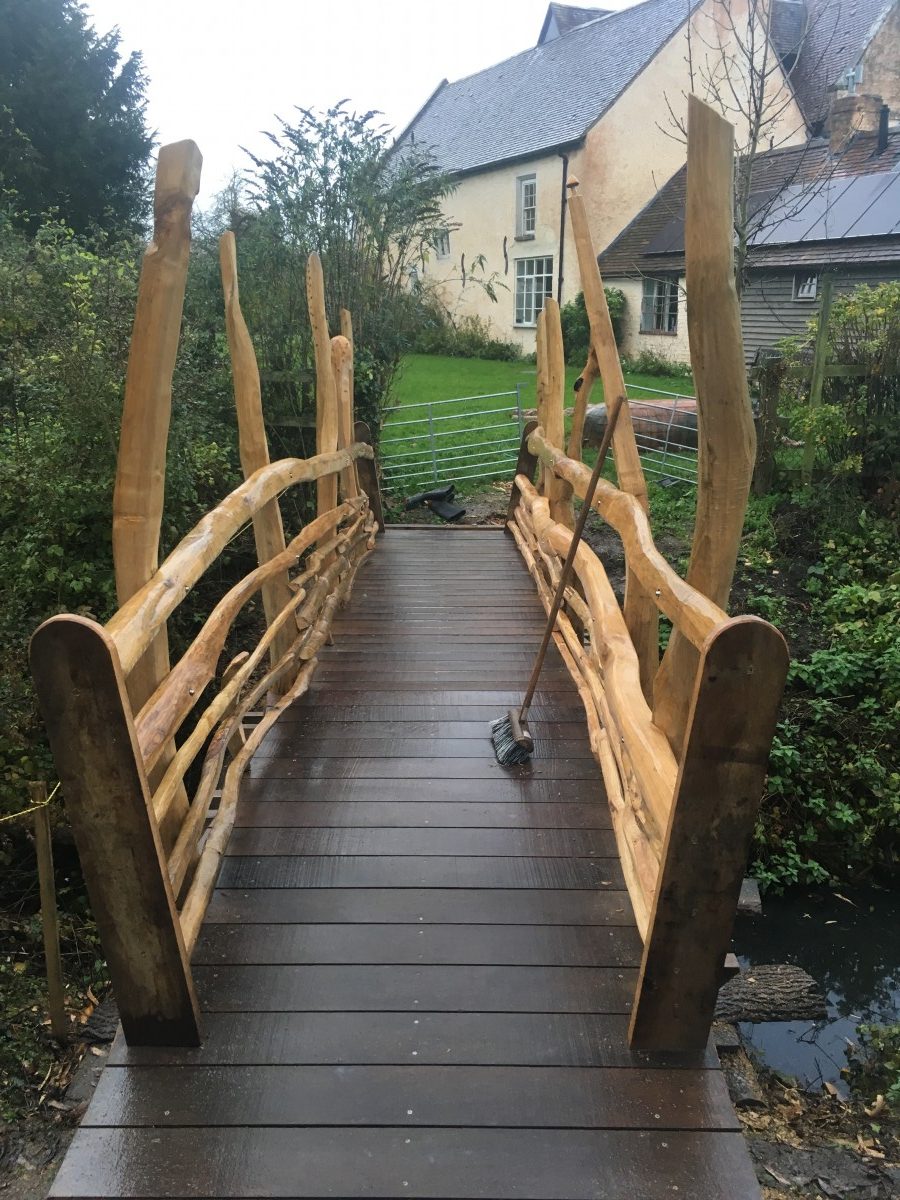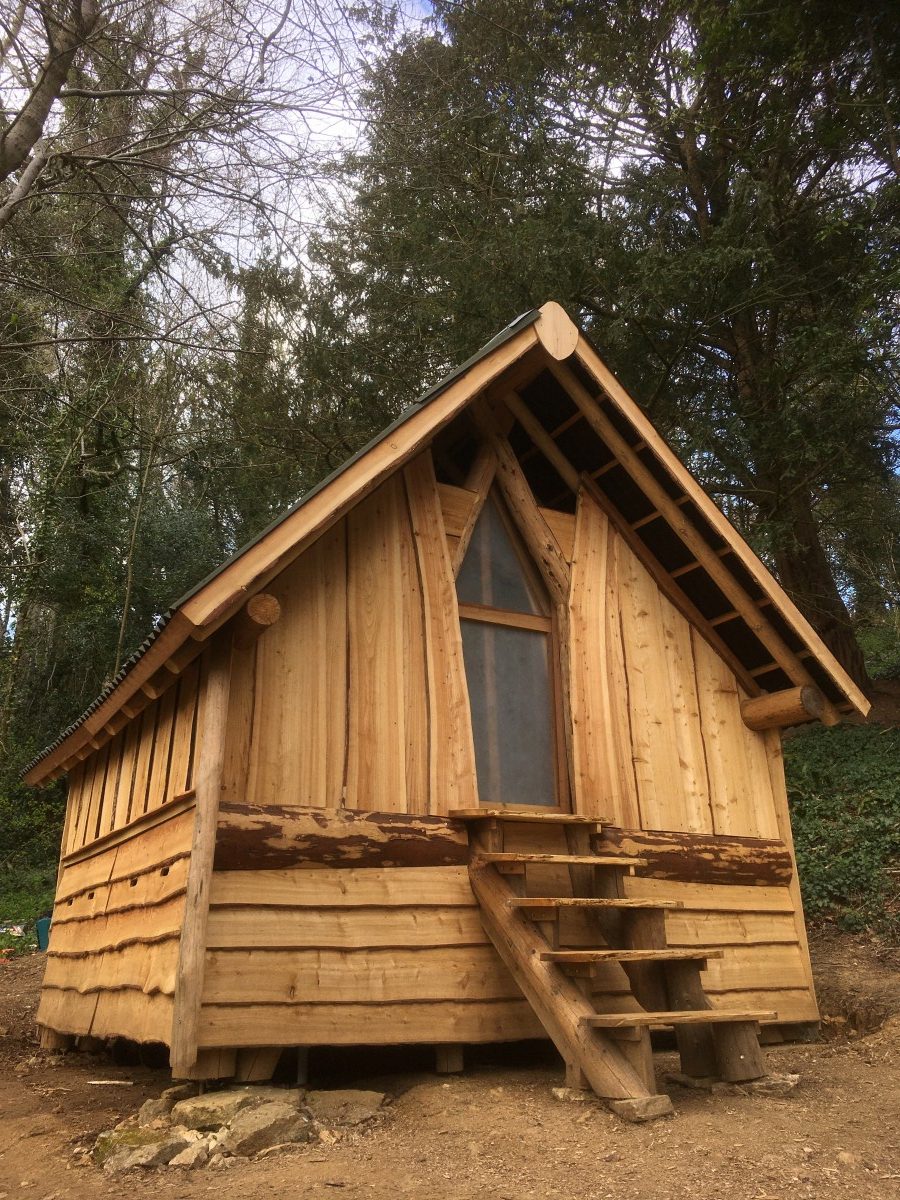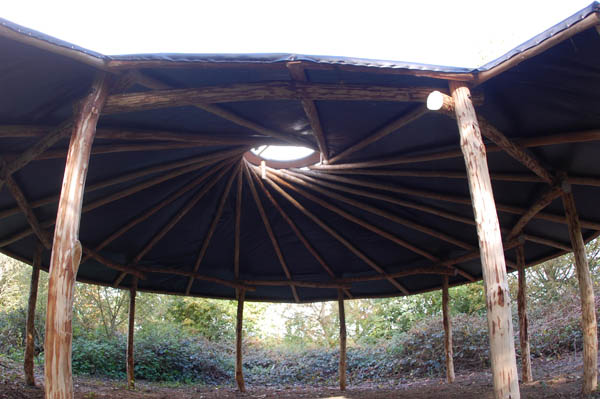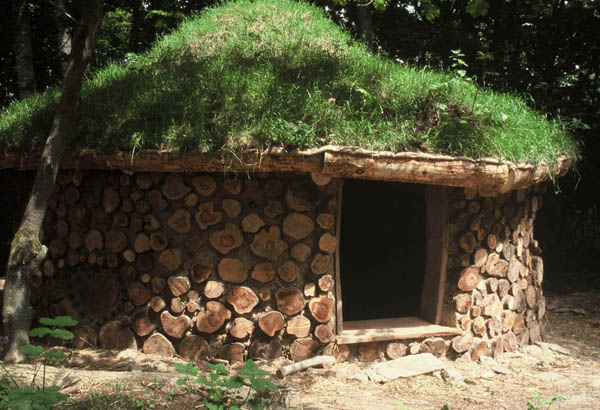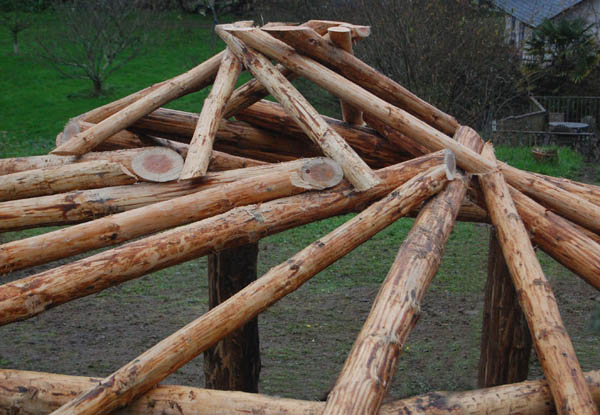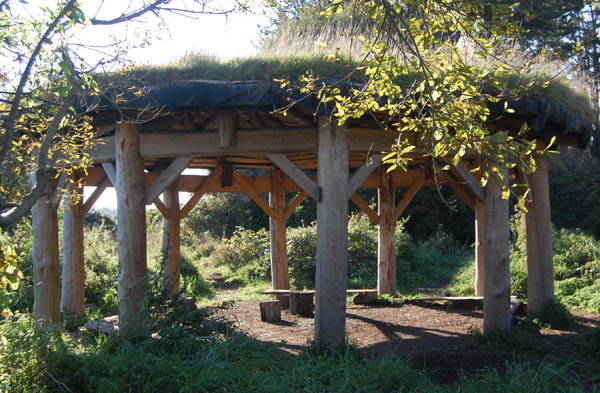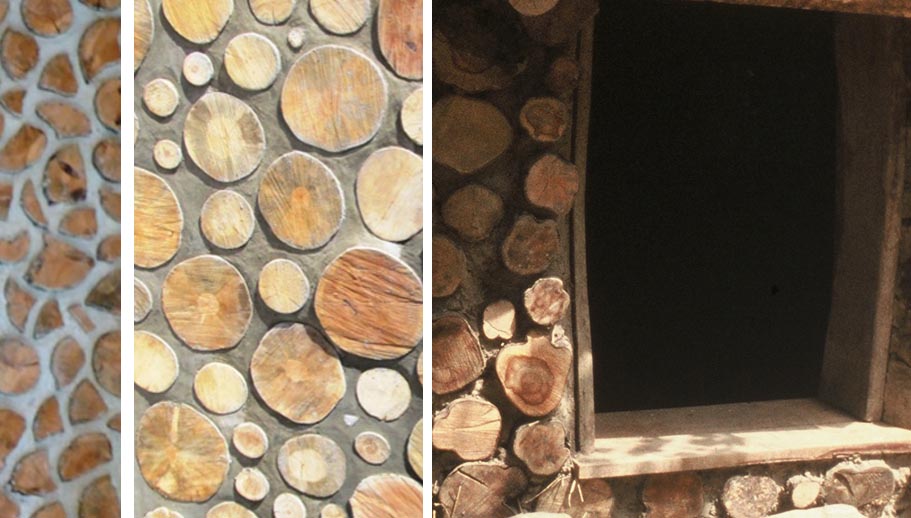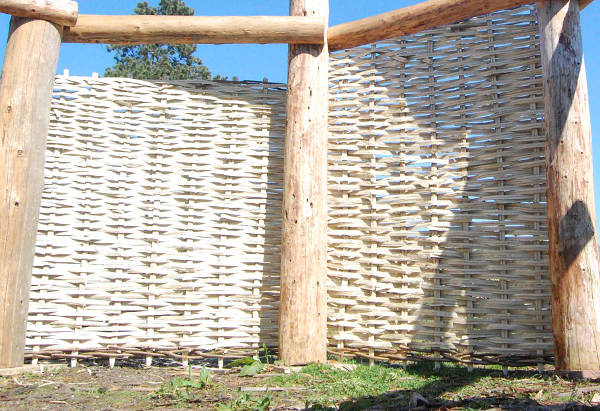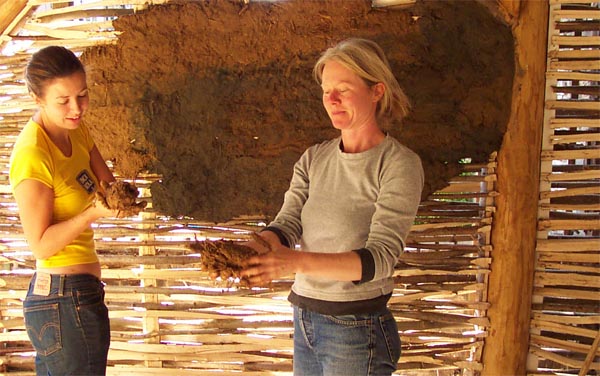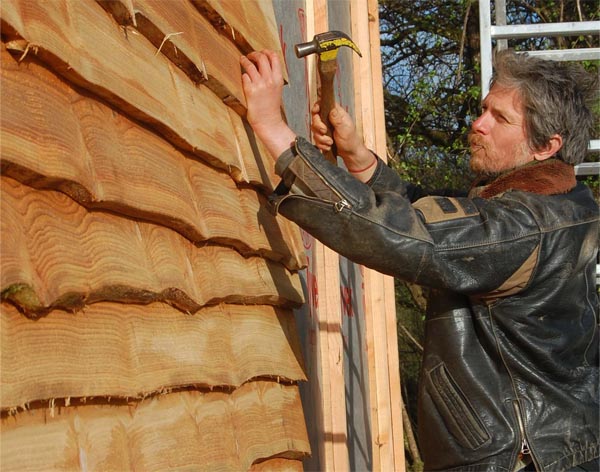
Roundwood timber framing for Reciprocal Roundhouses
We been Roundwood Timber Frames and Reciprocal Roof Roundhouses for over twenty years now and often engaging students, volunteers, staff and members of the pubic in the process.
A lot of people ask about Reciprocal roofs Roundhouses so I’ve added a bit of general detail about how we build them below. Browse the following design options for inspiration. Even if you are not sure exactly what you want yet ⇒ get in touch and we’ll guide you through the process.
Roundhouse Foundations
Our buildings sit on stone pads and are free-standing. These pad stones are supported by a simple hardcore foundation.
Reciprocal Frame Construction
We have pioneered our own jointing system that is extremely robust, making our buildings suitable for schools and public spaces.
Roundhouse Size
7-9 meters diameter is the most common roundhouse size as this holds a normal school class. We can build them as big as 20 meters and as small as 4. Barns and cruck frames buildings can be almost any size.
Reciprocal Roundhouse Roof
The roundhouses we build are usually turf covered although we can fit a canvas top, timber or tin roof. The reciprocal frame roof offers an open space which requires no central support. Our barns and cruck frames tend to have shingle or tin roofs.
Learning to build a Roundhouse
Our buildings are often used as educational or public spaces. We love involving people in the building process and have worked with school children, university students and volunteers of all ages. These guided sessions are facilitated by Adrian Leaman, lead craftsman and trained Forest School leader. If you wish to build your own then you can come on our course or ask me to project manage your self-build.
Roundhouse Building Costs
Many educational venues ask us to build the frame only, going on to lay their own roof and walls with staff and/or volunteers. That work can be facilitated by anyone with good general building skills, following a day of training, and offers a significant cost saving. We often build the entire roundhouse, including roof and walls. Commonly staff/volunteers will get envolved in the work. This can also reduce the overall cost of construction. To get an idea of costs get in touch and we’ll work through an estimate for you.
Involving children, students, staff or volunteers in the building process is about more than just cost saving. There are as many good reasons for it as there are people keen to be involved. The smiles and satisfaction along the way say it all.
Reciprocal Roundhouse Floors & Walls
Our roundhouses are either installed with a natural wood-chip floor or can be fitted with floor boards.
Cordwood walls
Cordwood is a great walling option using lengths of wood like bricks held together with a cob (clay & straw mix). We can fit these wall although educational centres and schools like to fit cordwood themselves as a volunteer or children’s activity. If this is the case I can give instruction on technique.
Hazel or Willow Walls
We can supply woven panels for the walls. It is also possible to have removable panels which can be taken down in summer to make the space open sided. Again weaving these panels is a brilliant activity to share with groups of all ages and many venues do this themselves.
Wattle and Daub Walls
Woven panels can also be covered in a cob mix to render them wind proof. This is called Wattle and Daub. Applying and mixing the daub is a fun activity for any group to get involved with.
Weatherboard Walls
We can also clad the roundhouse with weatherboarding which is a very attractive walling. We usually use Larch or Chestnut planks.Please ⇒ get in touch to discuss your project so that we can talk through which option best suits your needs and budget.
Further information about Roundhouses
It’s always inspiring to spend time in a Roundhouse. Round buildings are a welcome departure from the square-ness of our normal built environment. They sit very naturally in the landscape and, being similar to the Roundhouses of the Celts, create a link to our past.
The Roundhouses we build feature a Reciprocal Frame roof, which requires no central support. This roof is usually turf covered and sits on 8 to 13 posts, depending on structure diameter. (Severn to eight meters is most common as this holds a normal class, but we can also build them bigger or smaller.)
These structures are elegant and mind-boggling spectacles of geometry in action. The Reciprocal Frame, also known as a Mandala roof, has been used since the 12th century in Chinese and Japanese architecture although little or no trace of these ancient methods remains. Leonardo da Vinci also designed a self-supporting bridge using this method in the 16th century
Adrian Leaman has over 20 years’ experience in Roundwood Timber Framing. He has worked throughout the UK and is considered one of the country’s experts in this construction method. Adrian was involved in Ben Law’s ‘Woodland House’ (featured on Grand Designs) and project managed the build of Kevin McCloud’s ‘Man Made Home’ for the Channel 4 series.
Courses in ⇒ Roundwood Timber Framing & Roundhouse Building
We have been running our Roundwood Timber Framing and Roundhouse building courses since 2002. They are for self-builders, both experienced and novice. Held at the Woodyard on Duchy Home Farm and fully catered with delicious organic food.
Develop your skills, join the Community Building Camp
Making beautiful natural buildings affordable for charities, community groups, trusts and public organisations who put other people and the environment first.
Courses in ⇒ Woodsmanship
Adrian Leaman has been working as a Woodsman since 2000. Our most popular Woodsmanship course is the Axemanship course, where participants train in the use of traditional felling tools (axes and crosscut saws). The climax of the course is the felling of a mature tree by hand. Suitable for any aspiring Woodsmen, for tree surgeons or for those looking to the live the woodland life for a weekend. This course runs at a number of venues around the country.

